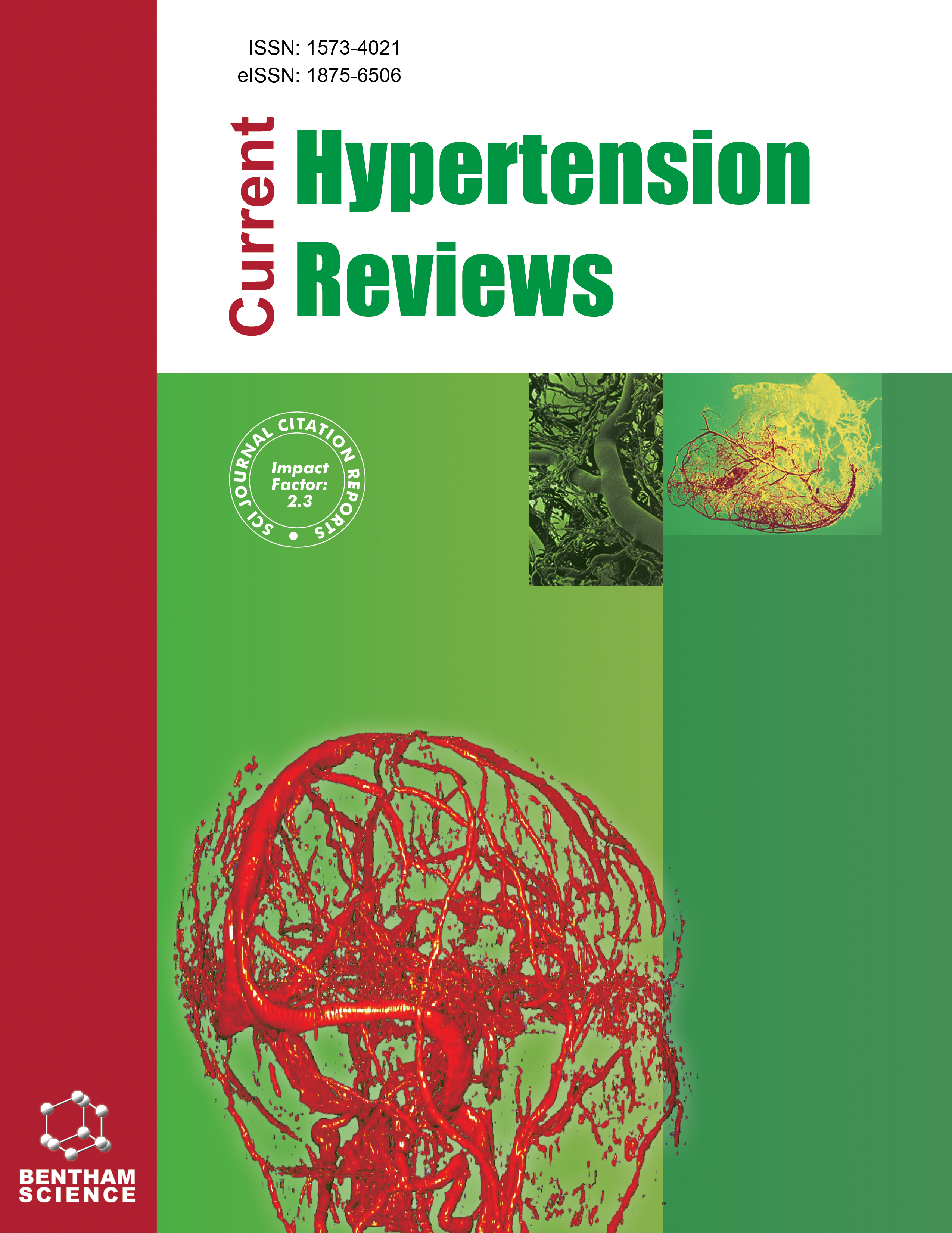- Home
- A-Z Publications
- Current Hypertension Reviews
- Previous Issues
- Volume 20, Issue 2, 2024
Current Hypertension Reviews - Volume 20, Issue 2, 2024
Volume 20, Issue 2, 2024
- Medicine, Cardiology, Hypertension, Peripheral Vascular Disease
-
-
-
Highlights from the New European Society of Hypertension Guidelines Document
More LessBy Guido GrassiThe present editorial will review the main recommendations included in the recent guidelines for the diagnosis and treatment of hypertension issued by the European Society of Hypertension. Emphasis will be given to some crucial issues of major relevance for current clinical practice, such as office and out-of-office blood pressure measurements, blood pressure threshold and targets, combination drugs, the position of beta- Read More
-
-
-
Targeting Hypertension: A Review on Pathophysiological Factors and Treatment Strategies
More LessAuthors: Ruhani Raj, Minakshi Garg and Anupreet KaurHypertension is one of the primary causes of cardiovascular diseases and death, with a higher prevalence in low- and middle-income countries. The pathophysiology of hypertension remains complex, with 2% to 5% of patients having underlying renal or adrenal disorders. The rest are referred to as essential hypertension, with derangements in various physiological mechanisms potentially contributing to the development of essent Read More
-
-
-
Treatment of Hypertension in Children
More LessAuthors: Francesca Mainieri, Veronica Maria Tagi and Francesco ChiarelliHypertension is a real problem in children. It shows a tracking behaviour, representing a key risk factor for hypertension, cardiovascular disease, and end-organ failure in adulthood. However, the importance of addressing arterial hypertension in children is not limited to its risk of tracking into adulthood. Thus, early detection and management are crucial. Hypertension may be primary or due to secondary causes, and identifica Read More
-
-
-
Statin Therapy and Flow-Mediated Dilation: A Systematic Review and Dose-Response Meta-Analysis Using the GRADE of Data from Randomized Controlled Trials
More LessIntroductionA previous meta-analysis reported the positive effects of statin therapy on endothelial function. However, the obtained result had several limitations that necessitated updating the information in this field. Therefore, a systematic and meta-analysis review was conducted to determine whether statin therapy could improve endothelial function, as assessed by flow-mediated dilation (FMD).MethodsMEDLINE, Sc Read More
-
-
-
Screening for Hypertension in Adults of a Northern Delta Province in Vietnam
More LessBackgroundThe proportion of people with hypertension is increasing, and those affected are relatively younger. Worldwide, it is estimated that people with high blood pressure are more than 1.5 billion people. In Vietnam, from 2002 to 2008, according to a national survey on hypertension and its risk factors within the prevention and control of cardiovascular disease program, the prevalence of hypertension was 25.1%. This Read More
-
-
-
Looking at the Golden Ratio from the Blood Pressure Perspective: Assessing the Hypertensive Patients and Normotensive Subjects
More LessAuthors: Hasan Atmaca, Bilal Cuglan, Zuhal Karaca Karagöz, Kenan Yalta and Ertan YetkinBackgroundThe representatives of mathematical concepts and indices allied to the Golden Ratio (GR) have been shown in the human body in superimposed human hands, phalangeal lengths of the digits, human ears, and the cardiovascular system. Recently, it has been demonstrated that the systolic blood pressure (SBP) to diastolic blood pressure (DBP) ratio measured by ambulatory blood pressure monitoring (ABPM) is cl Read More
-
Volumes & issues
-
Volume 20 (2024)
-
Volume 19 (2023)
-
Volume 18 (2022)
-
Volume 17 (2021)
-
Volume 16 (2020)
-
Volume 15 (2019)
-
Volume 14 (2018)
-
Volume 13 (2017)
-
Volume 12 (2016)
-
Volume 11 (2015)
-
Volume 10 (2014)
-
Volume 9 (2013)
-
Volume 8 (2012)
-
Volume 7 (2011)
-
Volume 6 (2010)
-
Volume 5 (2009)
-
Volume 4 (2008)
-
Volume 3 (2007)
-
Volume 2 (2006)
-
Volume 1 (2005)
Most Read This Month
Article
content/journals/chyr
Journal
10
5
false
en


